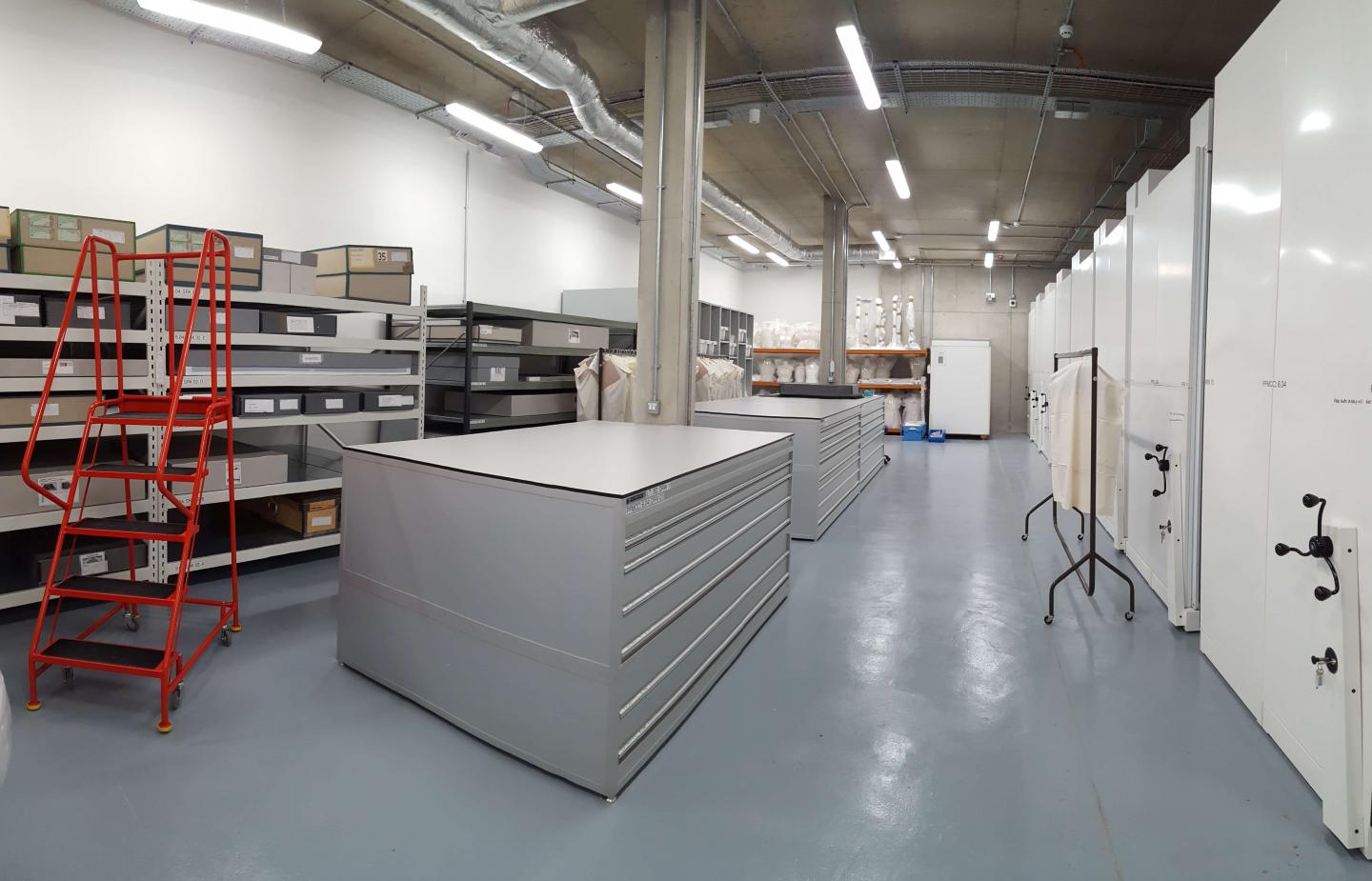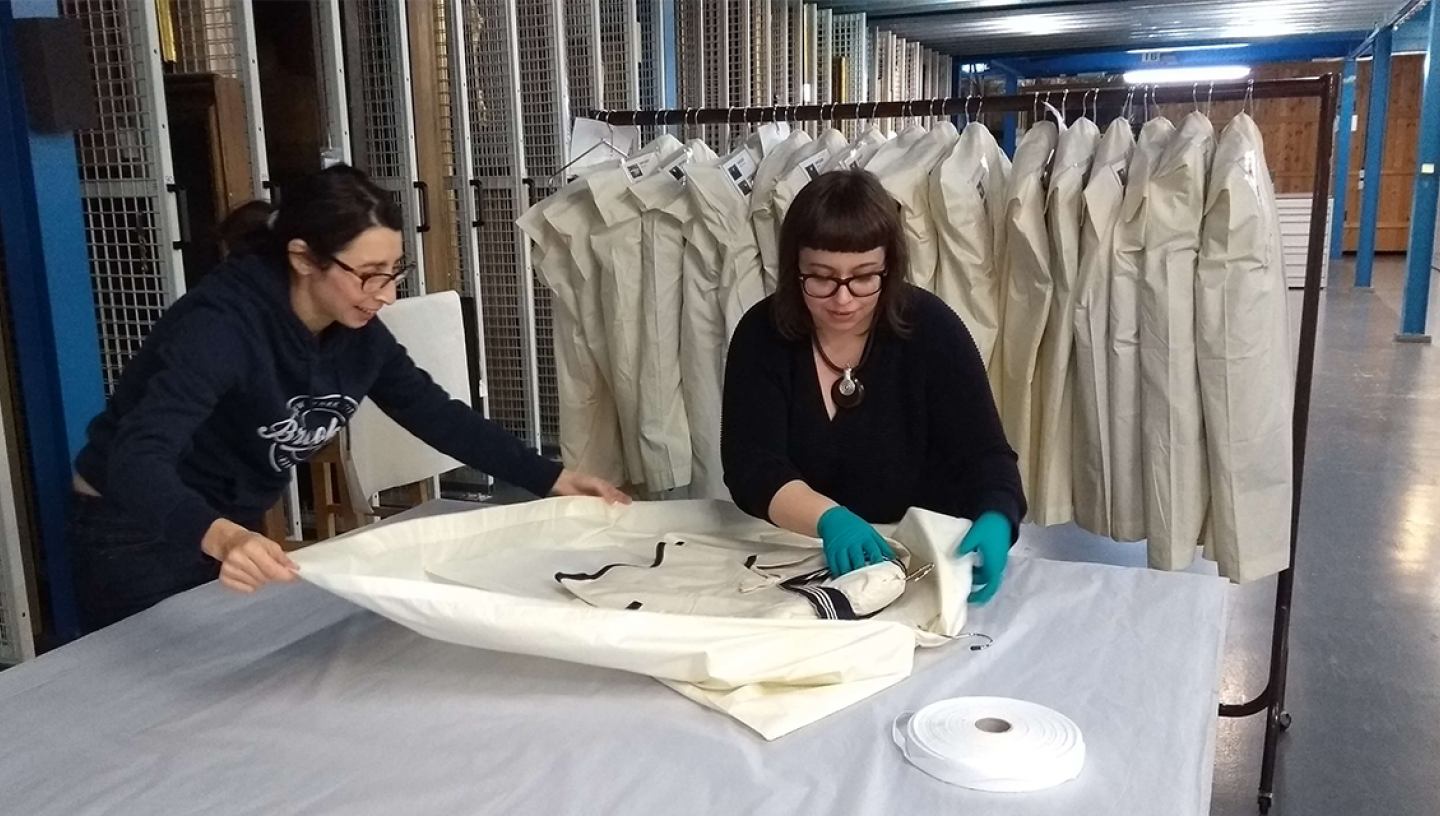
15 Mar 2019
Collections Storage Officer Alex Strachan and Textile Conservator Nora Meller give an insight into the work carried out with volunteers to prepare stored collections ready for relocation to the Prince Philip Maritime Collections Centre
In 2017, the National Maritime Museum was preparing to vacate its old store in North Greenwich and to relocate the collections stored within, to its new purpose-built collections storage and conservation centre - the Prince Philip Maritime Collections Centre (PPMCC). This included the Museum’s extensive uniform collection which holds over 7000 items of regulation dress, ratings’ clothing, ceremonial wear and accessories.
The collection was stored in mobile racking units, housing many rails of hanging uniforms and drawers filled with objects such as buttons, belts, shoes and epaulettes, as well as shelves full of boxes of hats and other accessories. The racking was to be dismantled and re-installed in the new store and collections would be returned to the same positons in the reassembled units.
To make the move as easy as possible, existing drawers were to be used as packing containers, to avoid individually extracting and packing objects and to minimise handling. Boxes were to be decanted and packed into trolleys by shelf, and hanging uniforms onto mobile garment rails in sequence. But before the move took place items needed to be secured and padded to avoid any risk of movement and potential damage during transport.
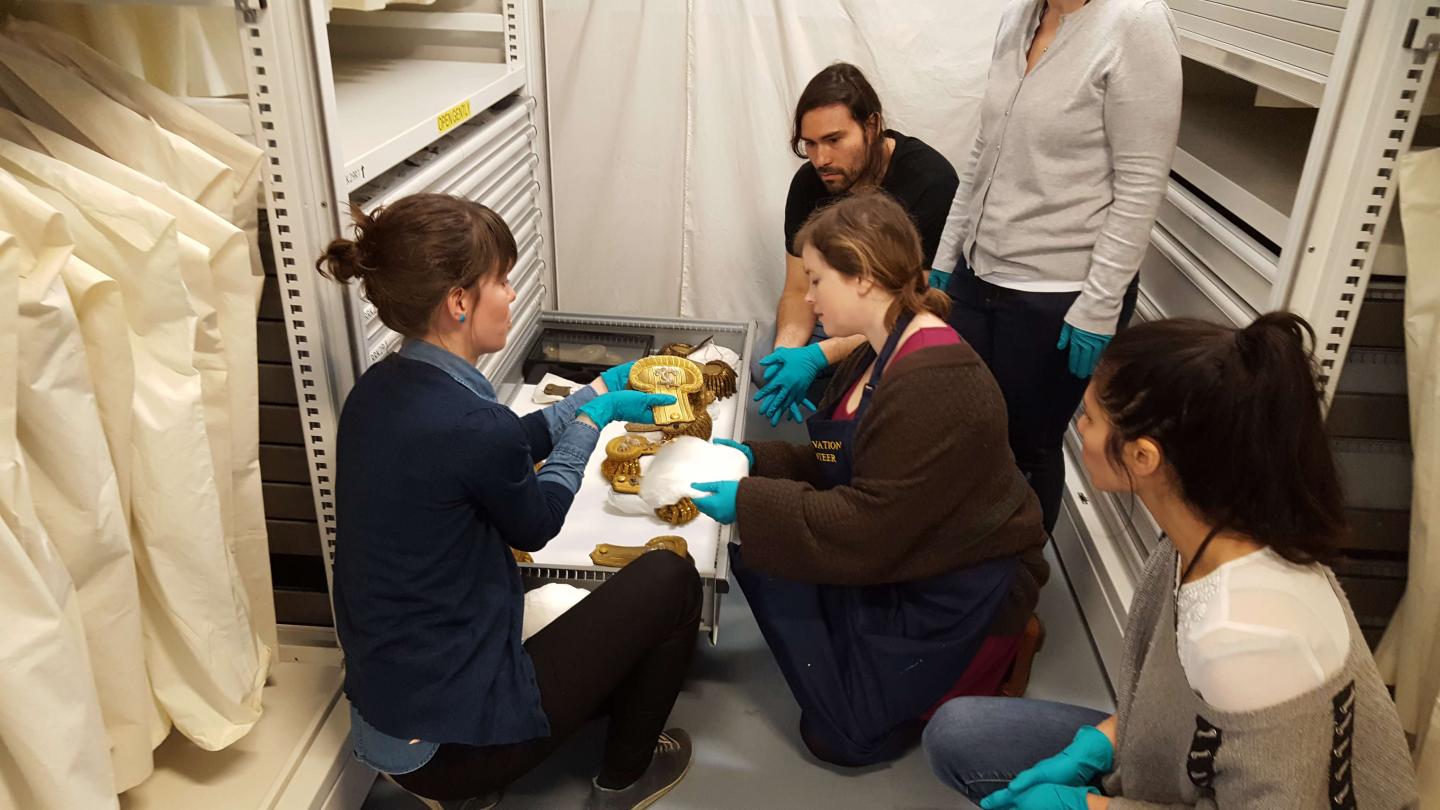
The Collections Management Storage Team and the Conservation Team called for help from the Museum’s Conservation Volunteers. While helping to speed up the pre-packing of the objects, the volunteers would learn textile handling and packing techniques and become more acquainted with the Museum’s magnificent collections. After a specialist training day in textile handling and project methodology, the volunteer team was able to carry out packing tasks independently, under the supervision of Conservation staff.
Hanging uniforms such as trousers and skirts needed securing to prevent them slipping from their hangers during transport. The hangers had been padded with foam tubing which needed to be wedged in place to stop it from rotating.
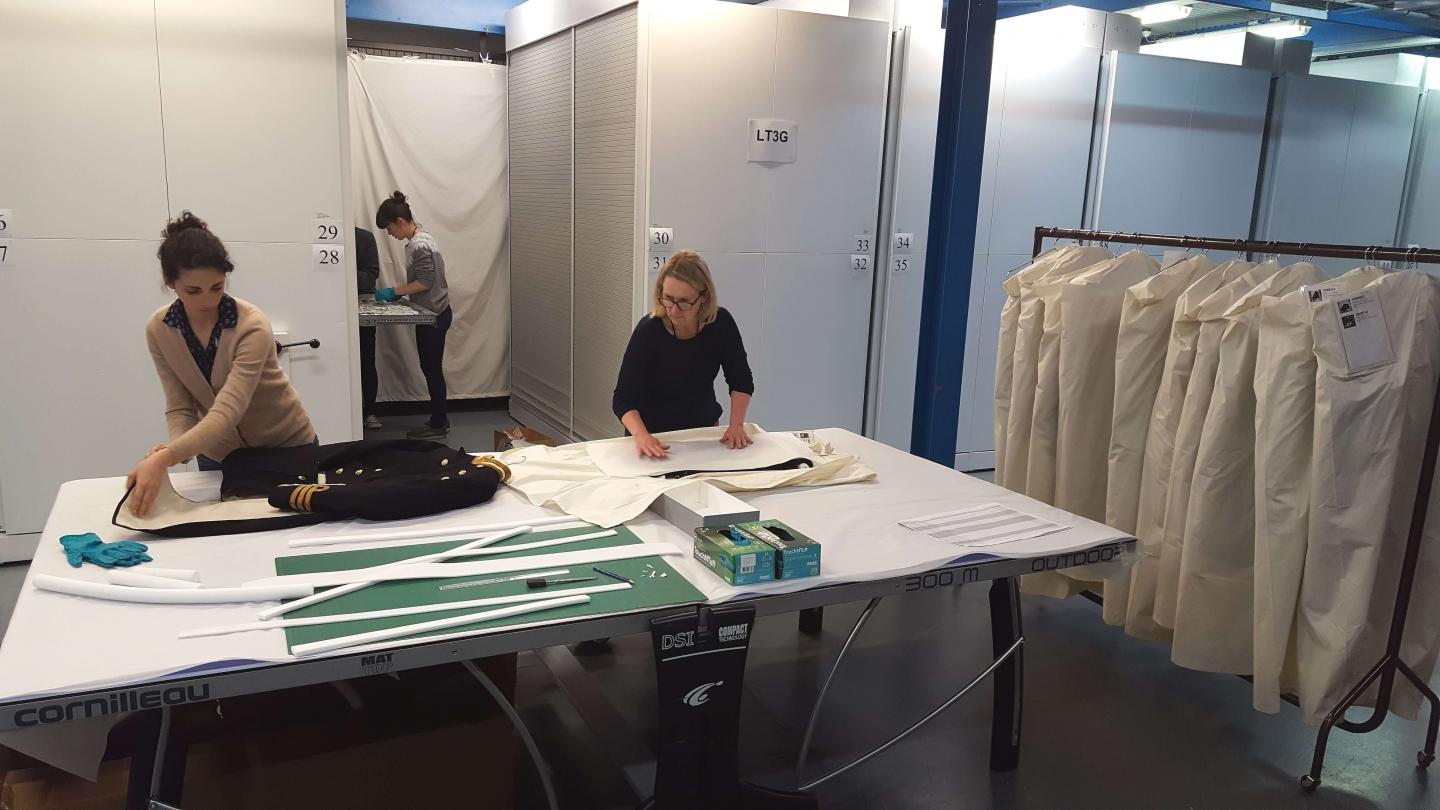
The volunteer team systematically retrieved the uniforms from the racking, carefully removed them from their cotton covers, and inserted individually-cut foam wedges to secure the tubing. They also placed sheets of acid-free tissue between items such as trousers and jackets, where buttons and other fixings could abrade the fabric during transportation.
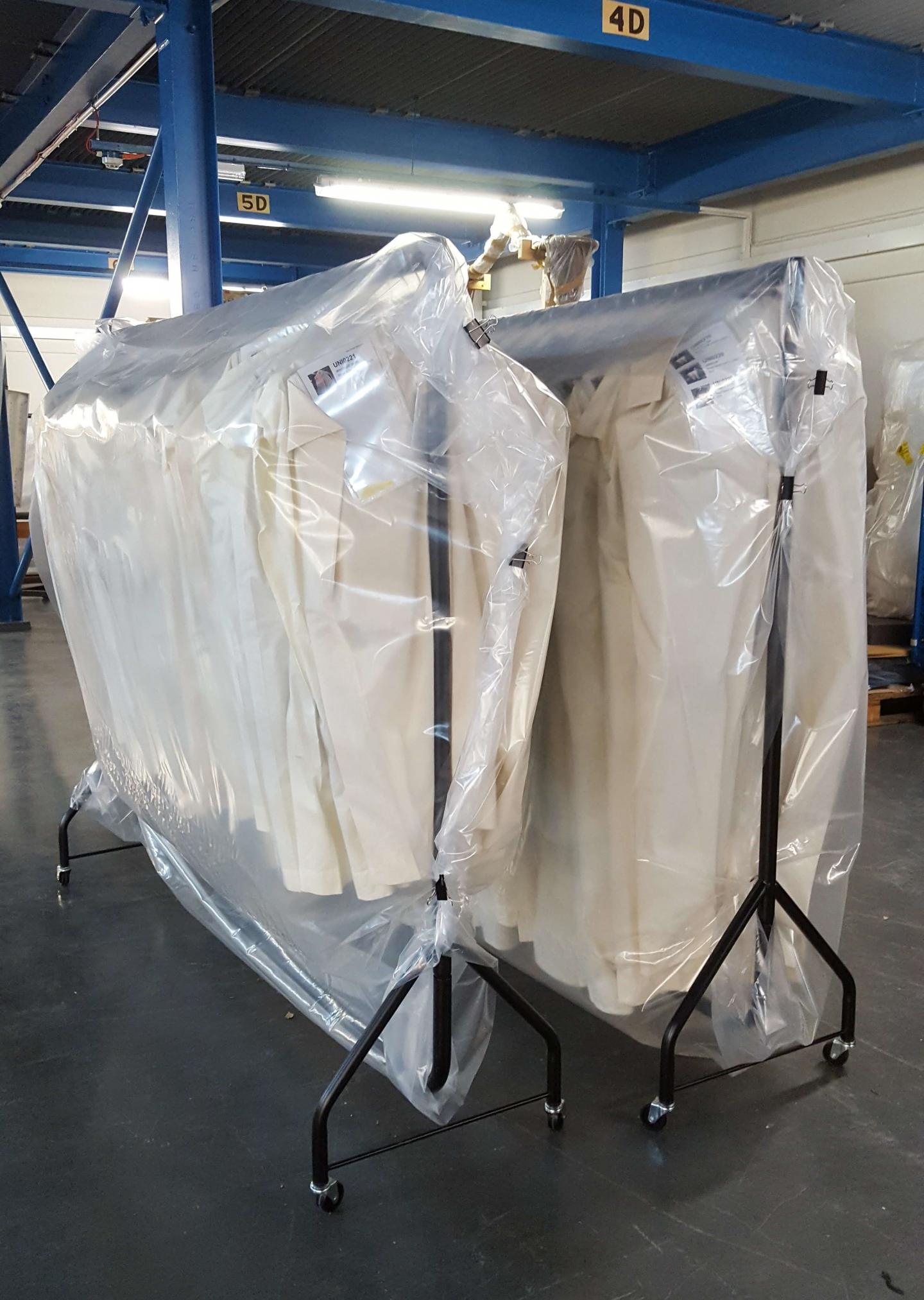
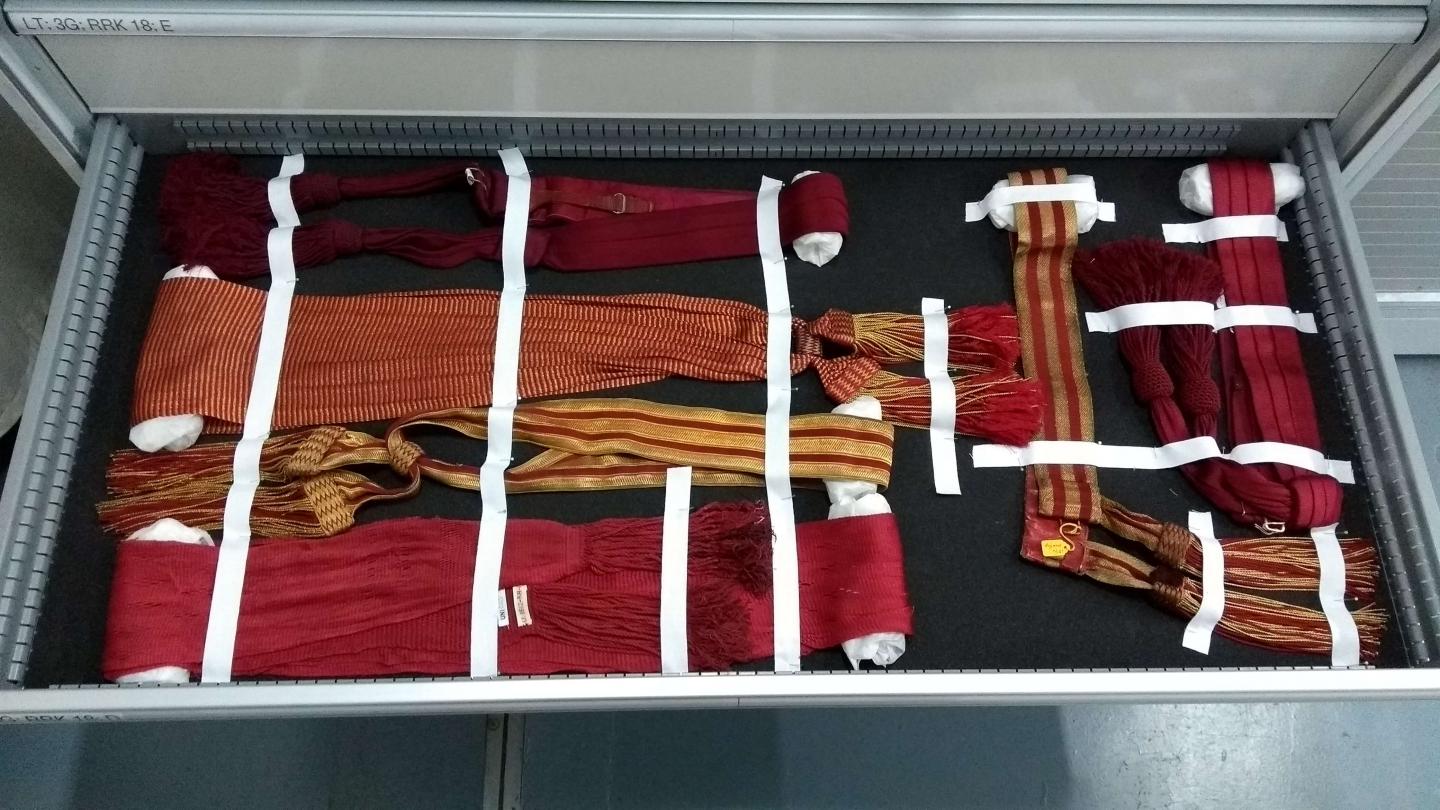
The drawers held various uniform accessories, including sword belts, epaulettes and buttons. These objects needed to be supported and secured inside the drawers.
The volunteers supported epaulettes and caps from underneath using balls made from tissue paper, and fixed them to the foam lining of the drawer with pinned lengths of cotton tape. They placed smaller items such as buttons into individual bags, labelled them with their identification number and pinned them in position.
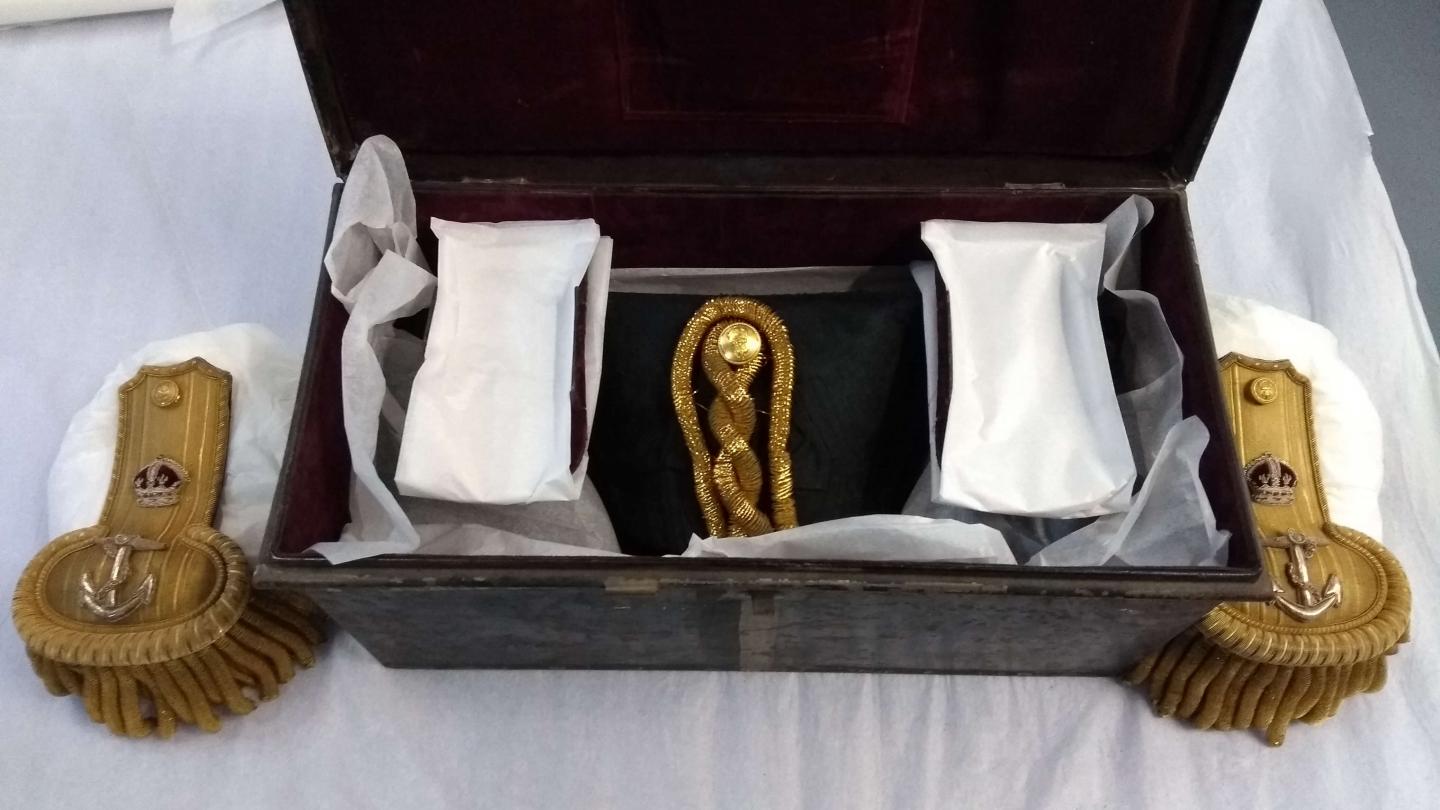
Many of the hats and epaulettes in the collection are stored inside their original metal boxes. We opened these up one-by-one, and packed out the insides with tissue paper to prevent the objects from moving about.
We secured their lids with cotton tape and the boxes were ready to be moved.
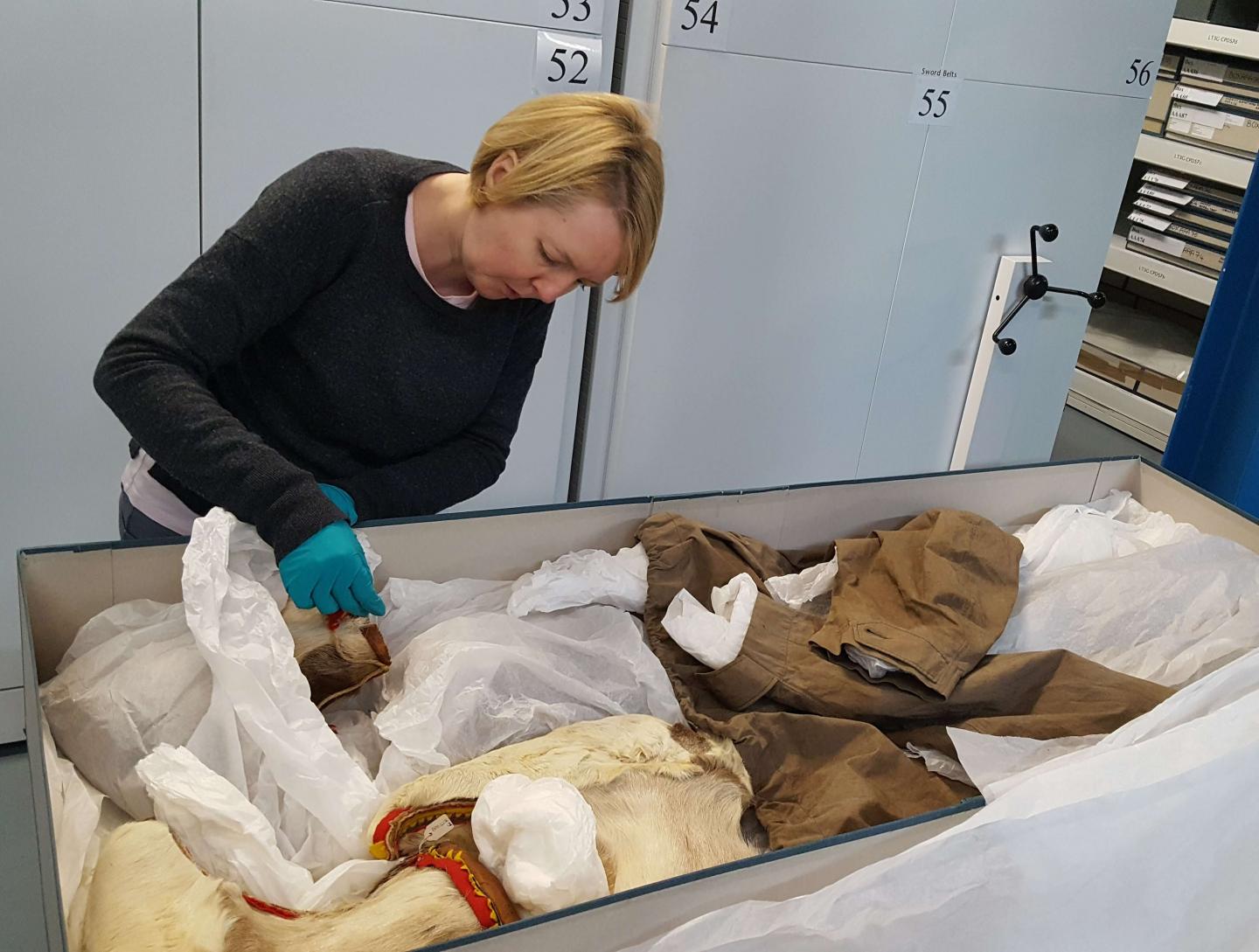
The final stage of packing was carried out by the Collections Storage Team just before the move began. Using acid-free tissue paper ‘sausages’ and balls’ they filled the gaps around objects.
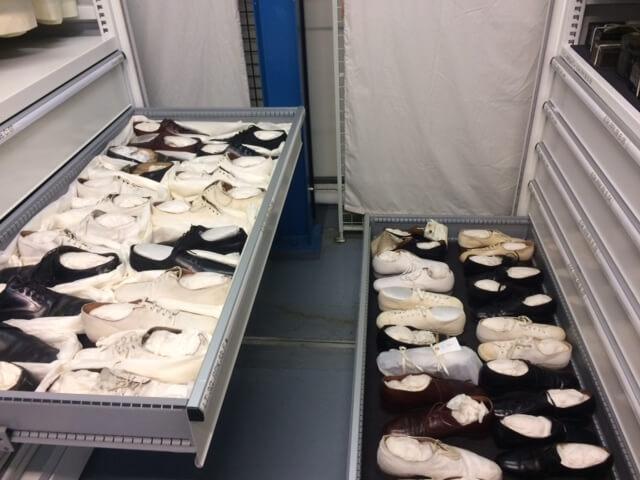
Lastly, sheets of archival fabric were placed on top of drawers to provide a protective barrier between objects and the outer wrapping which was added for transport.
Throughout the project, the volunteer team recorded their progress and the condition of objects. This information will be used as reference for future conservation work, and has helped the Collections Storage Team to identify and remove packing materials after the collections were installed. In total the volunteers successfully prepared 6,643 accessories and 453 hanging objects in readiness for packing and transportation to the new stores.
We are very grateful to the Conservation Volunteers for their time and effort in preparing the uniforms collection to move to its new home at PPMCC. Thank you to Adina Iaczko, Liz Buckeridge, Luciana Marques, Sarah Wood, Tulin Okbinoglu, Victoria Clark and Vittoria Sajeva.
